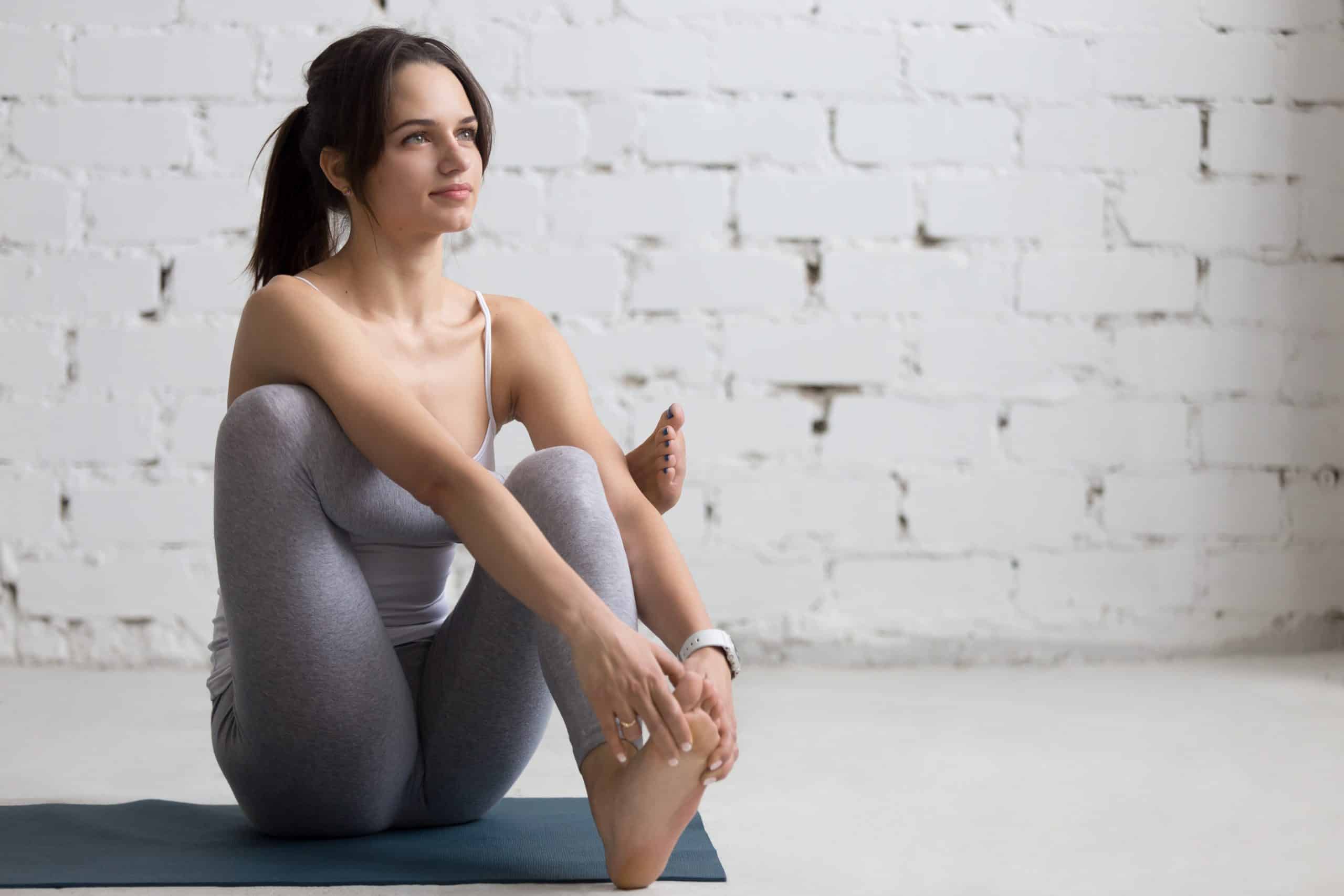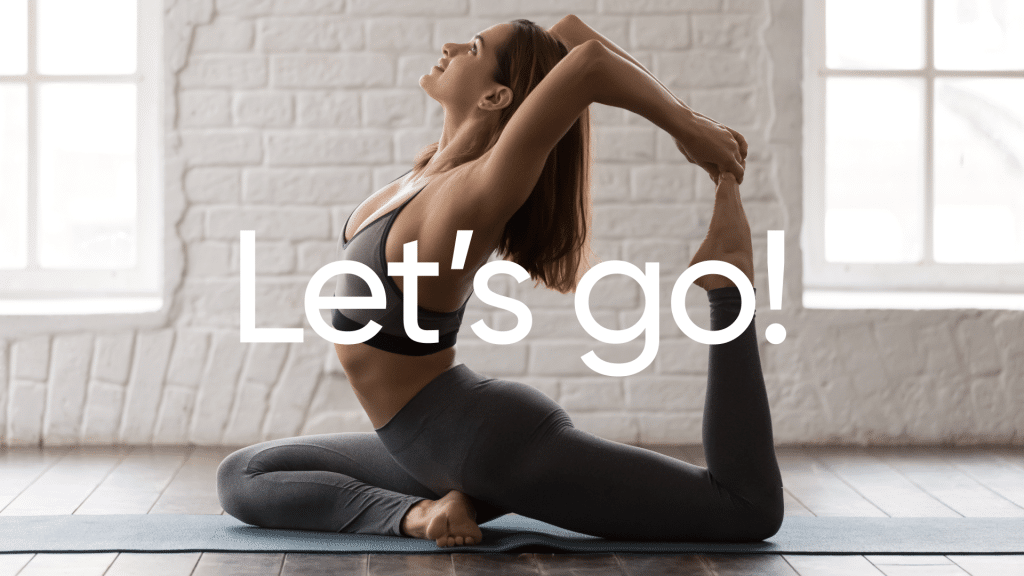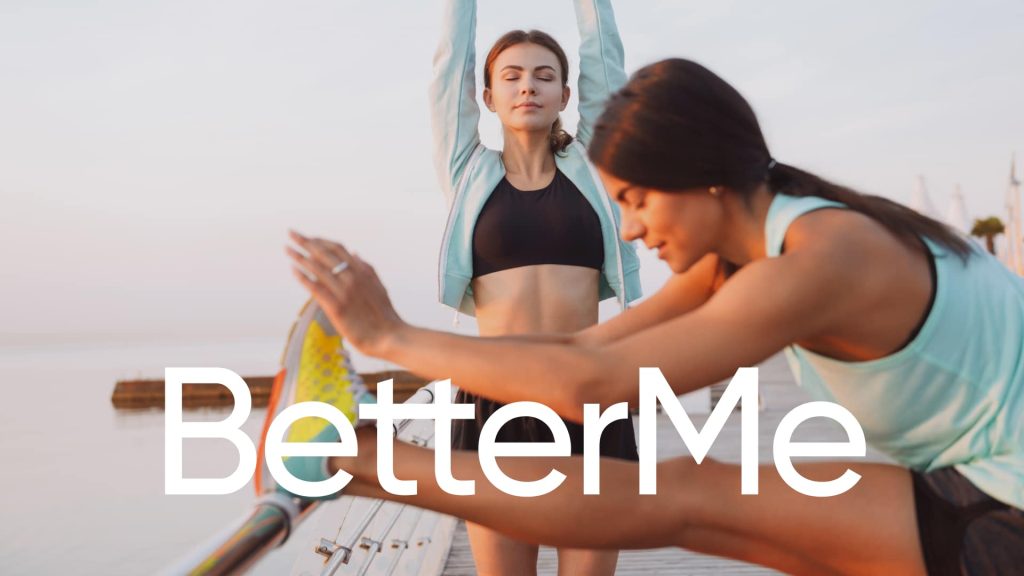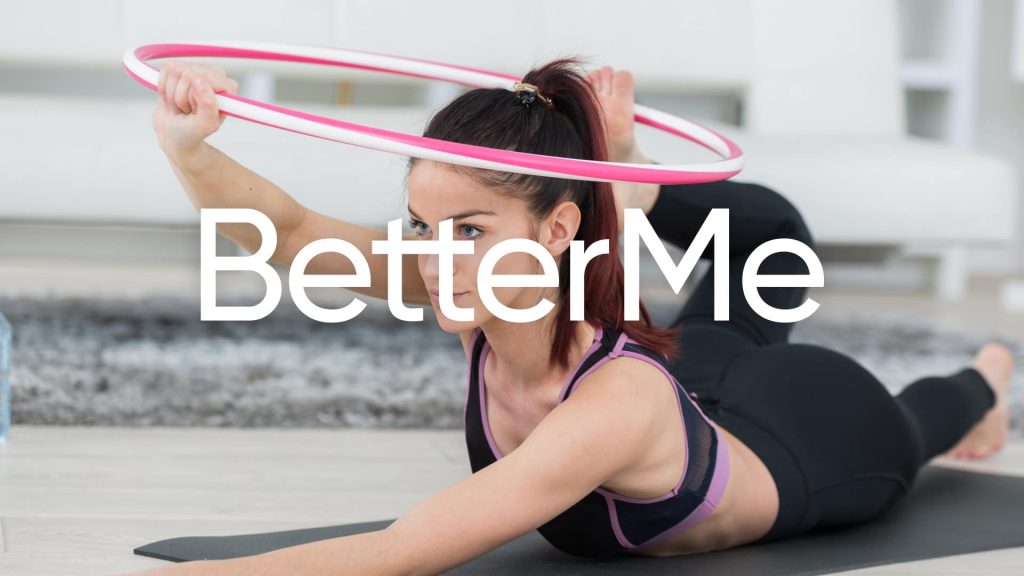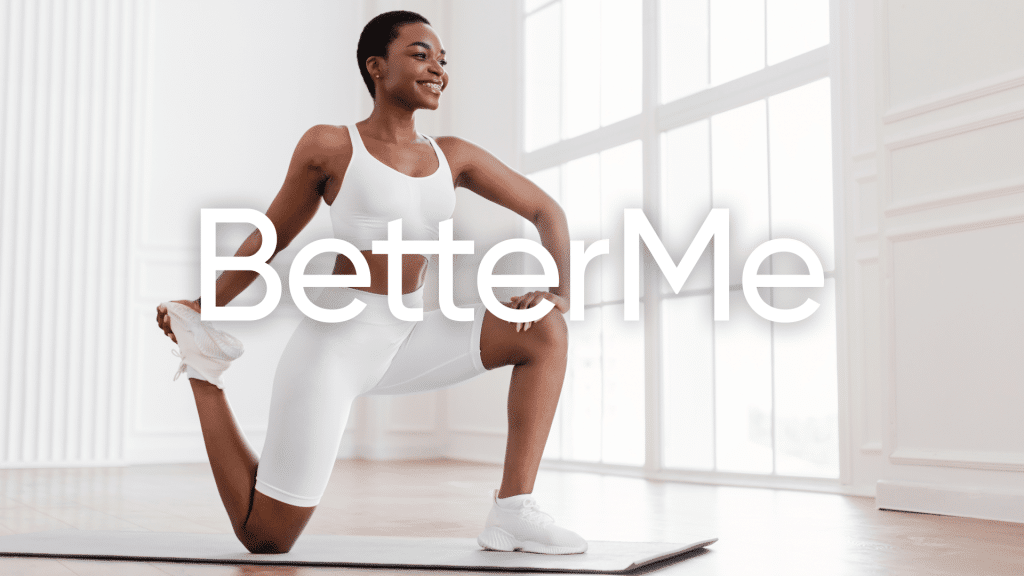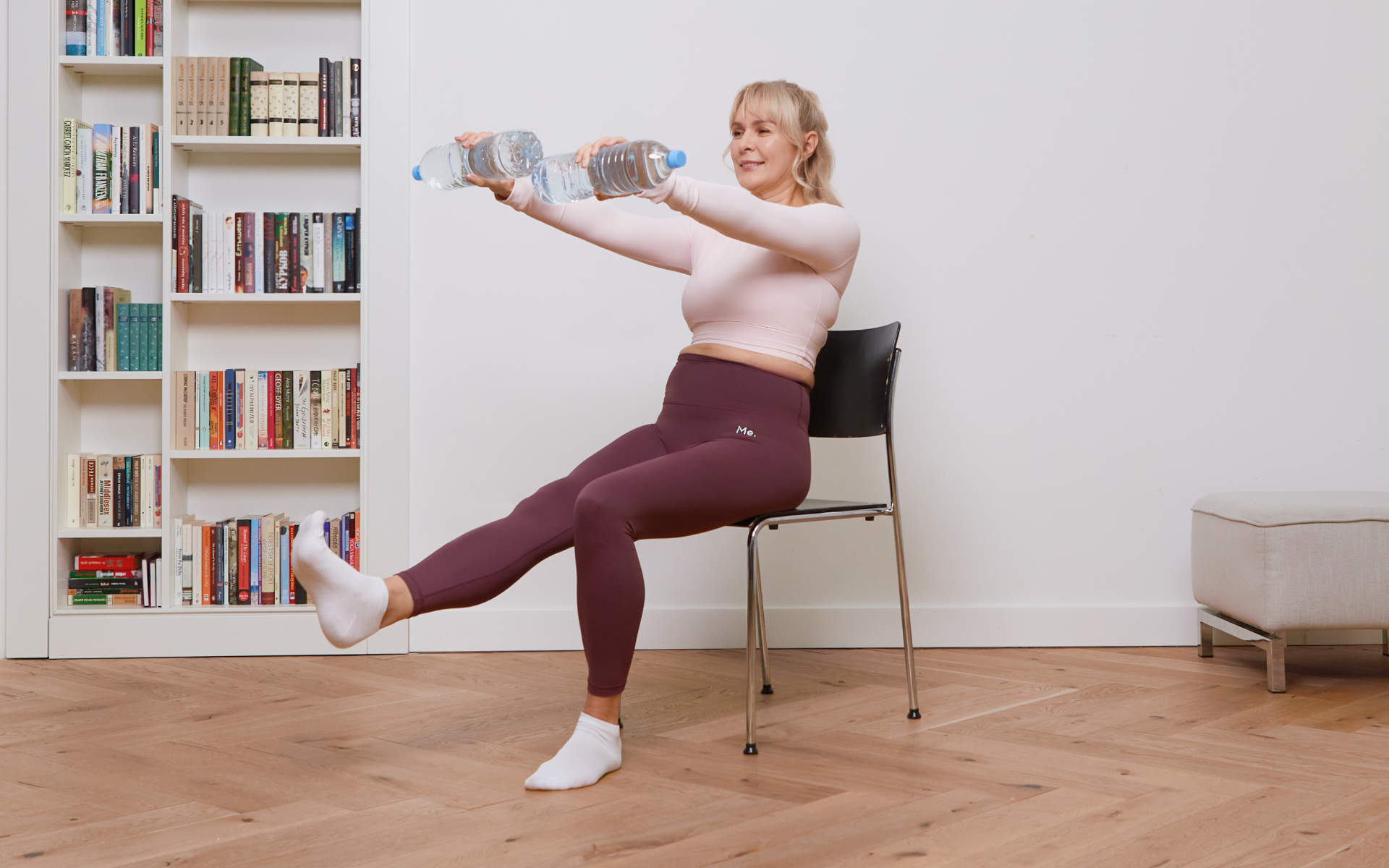Following a day of non-stop sitting or intense exercise, your glutes can become tight and tense, resulting in discomfort and limited mobility. What starts as occasional stiffness can soon escalate to persistent pain if it is not addressed properly.
Stretching your glute muscles can ease the tension and provide instant relief, which will help you move freely and comfortably again. However, to get the best results, you must understand both the anatomy of the glutes and the most effective stretches to target this area.
In this guide, we will explore 10 of the best glute stretches that can provide instant relief. From classic stretches such as the pigeon pose to lesser-known moves such as the seated figure-four stretch, we’ve got you covered with a variety of options to help you release tension and restore flexibility in your glute muscles.
What Causes Tight, Painful Glutes?
Tight, painful glutes are typically caused by a mixture of factors relating to excessive or insufficient use of these muscles.
The glute muscles include the gluteus maximus, gluteus medius, and gluteus minimus and they play an important role in many daily movements such as walking, running, standing, and sitting.
Whether you’re a workout beast or just a beginner making your first foray into the world of fitness and dieting – BetterMe has a lot to offer to both newbies and experts! Install the app and experience the versatility first-hand!
They facilitate hip extension, external rotation, and abduction of the hip. If these muscles are overworked, underused, or misused, it can result in tightness and discomfort.
1. Sedentary Lifestyle
Spending extended periods of time sitting can cause gluteal muscle atrophy – a condition that is characterized by the loss of muscle mass (3).
This happens because sitting for long durations places your glutes in a relaxed state, which reduces blood flow and makes them less active. Over time, this can lead to weak glutes that are prone to discomfort and injury (8).
Conversely, a sedentary lifestyle can lead to muscle imbalance. As the hip flexors are constantly in a shortened state while sitting, they can become tight, pulling on the lower back and tilting the hips forward. This places strain on the glutes, which causes them to stretch and weaken.
2. Overexertion During Exercise
Exercising without proper form or overexerting the glute muscles can also cause tightness and pain. This is common among athletes, dancers, and those who perform heavy lifting or high-intensity training. These activities place significant stress on the glutes, which makes these people prone to strain or injury.
Overuse of the glute muscles or failing to perform glute stretches after a workout can result in micro-tears in the muscle fibers, which will trigger a protective response from your body – muscle tension (4).
This tension or tightness is the body’s way of preventing further injury, but it can cause discomfort and limit mobility if it is not properly managed or treated.
3. Poor Posture
Poor posture, such as excessive anterior or posterior pelvic tilt, can cause glute tightness. These faulty postures can strain the glute muscles, leading to them tightening in an attempt to maintain balance and stability (5).
Standing or sitting with a slumped posture or constantly favoring one side can also contribute to gluteal discomfort after a long period of time. These positions may cause muscle imbalances, which overloads the glute muscles on one side and potentially leads to tightness and pain (1).
4. Inadequate Stretching
Inadequate stretching before and after physical activity can contribute to tight glute muscles. Stretching will help increase blood flow to the muscles, which promotes flexibility and reduces the risk of muscle tightness and strain (6).
Failing to do glute stretches before a workout or performing the wrong type of stretch can leave the glute muscles feeling tight and contracted. Over time, this can lead to muscle imbalances, which will reduce your range of motion and make your glutes more prone to injury.
5. Injury or Medical Conditions
A previous injury or certain medical conditions can also be the cause of tightness in the glute muscles. Injuries to the lower back, hip, or knee may affect the alignment and functioning of the glutes, which will cause them to become tight as a means of compensating for the injury.
Medical conditions such as piriformis syndrome, where the piriformis muscle irritates the sciatic nerve, can also lead to tightness and pain in the glutes.
Similarly, conditions such as osteoarthritis and hip bursitis can cause muscle tightness as the body attempts to protect the affected area from further damage.
6. Stress
Psychological stress can manifest itself in physical ways, such as causing muscle tension (7). If you’re stressed, your body will go into ‘fight or flight’ mode, which causes the muscles to tense up. This includes the glutes, and if the stress persists, it can lead to chronic tightness.
Prolonged muscle tension from stress can cause a decrease in blood flow to the area, which will lead to discomfort and pain. Finding healthy ways of managing stress, such as exercise, relaxation techniques, and ensuring adequate rest, can help prevent and relieve tight glute muscles (7).
Read more: 8 Upper-Back Stretches for Mild Back Pain.
What Are The Symptoms of Tight Glutes?
When your glute muscles become tight, you may experience a range of symptoms such as a dull, persistent ache in the region. Other common signs of tight glute muscles include:
Reduced range of motion: You may find performing activities that require flexibility, such as squatting, jumping, or even walking up stairs, to be quite challenging.
Pain or discomfort: This may be localized in the glute area, but it can also radiate down the leg or up towards the lower back.
Muscle spasms or twitching: These are involuntary movements or contractions in the glute muscles, which can be a sign of tightness.
Difficulty sitting or standing for long periods: Tight glutes can make it uncomfortable to maintain certain positions for an extended period of time.
Pain during physical activity: Activities that engage the gluteal muscles, such as running or cycling, may become painful.
Posture changes: You may notice a change in your alignment, such as an anterior or posterior pelvic tilt, which can result from muscle tightness.
Limping or favoring one side over another: This may happen when the glute muscles on one side are tighter than the other, which causes an imbalance.
Weakness in other muscles: Glute tightness can cause the surrounding muscles to work harder to compensate. For example, the hamstrings may become weak as they are not being used properly. This can lead to further issues later.
How Do You Get Rid of Sore Glutes Fast?
Stretching is a simple and immediate way of alleviating mild gluteal discomfort. Regular stretching can soothe sore muscles while also helping increase flexibility and improve posture.
Here, we focus on 10 glute stretches, each one specifically designed to target different areas of your glutes, which will provide some immediate relief and promote the long-term health of these vital muscles.
Seated Figure-Four Stretch
The seated figure-four stretch is one of the 10 best glute stretches and it targets the piriformis muscle in the glutes. This stretch can alleviate tightness and discomfort that are often associated with conditions such as sciatica and lower back pain.
Steps:
- Sit on the floor with your legs extended in front of you.
- Bend your right knee and place your right ankle on top of your left knee.
- Gently press down on your right knee while leaning forward from your hips.
- Hold this position for 20-30 seconds, then switch sides.
Pigeon Pose
The pigeon pose is an excellent deep glute stretch that targets the glute muscles, hip flexors, and lower back, which makes it a great choice for glute stretches for lower back pain.
Steps:
- Begin in a plank position.
- Bring your right knee towards your right hand, placing your right foot near your left hand.
- Extend your left leg behind you with your knee and the top of your foot resting on the floor.
- Lower your body until you feel a comfortable stretch.
- Hold for 30 seconds, then switch sides.
Supine Piriformis Stretch
The supine piriformis stretch is particularly effective for runners. It targets the piriformis, a small muscle that is located deep in the buttocks.
Steps:
- Lie on your back on a mat with both knees bent.
- Pull your right knee towards your chest, holding your ankle with your right hand and your knee with your left hand.
- Pull your right knee towards your left shoulder while keeping your back flat on the floor.
- Hold for 20-30 seconds, then switch sides.
Lying Hamstring Stretch
The lying hamstring stretch is an excellent option for glute stretches following a workout. It targets the glute muscles and hamstrings and helps ease any post-workout muscle tightness.
Steps:
- Lie on your back and extend both legs.
- Lift your right leg, keeping it straight, and hold it with both hands.
- Pull your leg towards your chest until you feel a stretch.
- Hold for 20-30 seconds, then switch sides.
Seated Forward Bend
The seated forward bend is a deep glute stretch that targets the glute muscles, hamstrings, and lower back, and also promotes flexibility and relieves muscle tightness.
Steps:
- Sit on the floor with your legs extended in front of you.
- Bend at the hips and reach for your toes with your hands.
- Hold for 20-30 seconds, then release.
Glute Bridge
The glute bridge is a gentle but effective stretch and it is ideal as a glute stretch before a workout. It helps warm up and engage the glute muscles, which prepares them for exercise.
Steps:
- Lie on your back with your knees bent and feet flat on the floor.
- Push through your heels to lift your hips off the floor.
- Hold for a few seconds and then lower your hips.
- Repeat 10 times.
Somatic Stretch
The somatic stretch is a gentle chair stretch, which makes it a perfect glute stretch for seniors. It targets the glute muscles with a lower risk of injury, promoting flexibility, and easing muscle tightness. More gentle stretching positions are discussed in our chair stretches article
Steps:
- Sit on the edge of a chair.
- Cross one ankle over the opposite knee.
- Gently lean forward until you feel a stretch in your glute.
- Hold for 20-30 seconds, then switch sides.
Standing Hip Circle
The standing hip circle actively engages the glute muscles, promotes flexibility, and offers a good warm-up or cool-down stretch.
Steps:
- Stand up straight, holding onto a chair or wall for balance if necessary.
- Lift your right knee towards your chest.
- Extend your right leg out to the side, then move it in a circular motion.
- Repeat this motion 10 times, then switch sides.
Piriformis Chair Stretch
The piriformis chair stretch is another great chair stretch that targets the piriformis muscle in the glutes. It’s a great option for those who sit for extended periods.
Steps:
- Sit on the edge of a chair.
- Cross your right ankle over your left knee.
- Lean forward from your hips until you feel a stretch.
- Hold this position for 20-30 seconds, then switch sides.
Knee Hug Stretch
The knee hug stretch is a great deep stretch that targets the glute muscles, which reduces tightness and discomfort.
Steps:
- Lie on your back with both knees bent and feet flat on the floor.
- Hug one knee into your chest with both arms until you feel a comfortable stretch in your glutes.
- Hold for 20-30 seconds, then switch sides.
- Alternatively, bring both knees into your chest at the same time for a deeper stretch.
When it comes to weight loss, progress is made by inches, not miles, so it’s much harder to track and a lot easier to give up. BetterMe app is your personal trainer, nutritionist and support system all in one. Start using our app to stay on track and hold yourself accountable!
How Do You Stretch Glutes for Pain?
You should stretch consistently, properly, while breathing, and while listening out for signs of extreme discomfort to avoid worsening your condition. In our piece on why stretching feels good, we explain that stretching shouldn’t hurt, and if it does, you should ease off.
When stretching for glute pain relief, it’s important to abide by these key principles:
Consistency: You must stretch often to relieve muscle tension and maintain flexibility. Try incorporating these glute stretches into your daily routine, even on days when you’re not experiencing any discomfort.
Proper form: Performing stretches correctly is the key to avoiding injury and ensuring that the stretch targets the right muscles. This is why each of the stretches listed above includes detailed steps.
Breathe: Remember to breathe deeply and evenly throughout each stretch. Proper breathing can help you relax, making the stretch more effective.
Comfort: Stretching should never cause pain. If you find a stretch to be painful, this could be a sign that you’re pushing too hard or doing the stretch incorrectly. You should aim for a feeling of mild tension during each stretch, rather than pain.
Patience: Flexibility and pain relief won’t happen overnight. It’s important to remain patient and monitor your progress over time. Pain should gradually decrease as you continue to stretch consistently.
Hydration: Remaining hydrated can help prevent muscle cramps and stiffness (2). Make sure you drink plenty of water, particularly before and after stretching.
Warm-up: Before you start your stretching routine, you should warm up your body with a few minutes of light cardio, such as walking or jogging, to increase blood flow to the muscles and make them more pliable.
Remember, if your glute pain persists despite regular stretching, you should seek medical advice as this could be a sign of a more serious condition.
Read more: 8 Upper-Back Stretches for Mild Back Pain.
Frequently Asked Questions
What causes tight, painful glutes?
Tight, painful glutes can be caused by several factors, such as overuse, improper form during activities, prolonged sitting, muscle imbalances, and injuries.
Should I stretch sore glutes?
Yes, gentle stretching can help relieve sore glutes. However, it’s important to listen to your body and avoid any stretches that cause you physical pain.
How long does it take for tight glutes to improve?
The time for tight glutes to improve can vary depending on the severity of the tightness and the overall health of the individual, but with regular stretching and proper care, improvements will be typically seen in a few weeks.
Should you massage sore glutes?
Yes, a gentle massage can help relieve soreness in the glutes by increasing blood flow and promoting muscle relaxation. Make sure you use light pressure and avoid any areas that are particularly painful.
How do you heal a strained glute?
If you have a strained glute, you should seek appropriate medical advice to ensure a proper diagnosis and treatment plan.
How did I pull my glute muscle?
A pulled glute muscle can occur as a result of sudden movements, heavy lifting, sports activities, or improper form during exercise. It typically presents as a sharp pain in the buttock area, which may become worse during movement.
Should you massage a pulled gluteal muscle?
While massage can be beneficial for muscle recovery, it’s not typically advised for acutely pulled muscles, as the injury could potentially be worsened as a result. It’s best to wait until the initial inflammation and pain have subsided before you consider massage.
The Bottom Line
The glute stretches outlined in this article are great for improving strength, flexibility, and overall health. They can also help relieve tightness and discomfort in the glutes. However, if your pain persists despite regular stretching, you should seek medical advice as this could be a sign of a more serious condition.
DISCLAIMER:
This article is intended for general informational purposes only and does not serve to address individual circumstances. It is not a substitute for professional advice or help and should not be relied on for making any kind of decision-making. Any action taken as a direct or indirect result of the information in this article is entirely at your own risk and is your sole responsibility.
BetterMe, its content staff, and its medical advisors accept no responsibility for inaccuracies, errors, misstatements, inconsistencies, or omissions and specifically disclaim any liability, loss or risk, personal, professional or otherwise, which may be incurred as a consequence, directly or indirectly, of the use and/or application of any content.
You should always seek the advice of your physician or other qualified health provider with any questions you may have regarding a medical condition or your specific situation. Never disregard professional medical advice or delay seeking it because of BetterMe content. If you suspect or think you may have a medical emergency, call your doctor.
SOURCES:
- 3 surprising risks of poor posture (2023,harvard.edu)
- Influence of Hydration and Electrolyte Supplementation on Incidence and Time to Onset of Exercise-Associated Muscle Cramps (2005,nih.gov)
- Muscle atrophy (2021,medlineplus.gov)
- Muscle aches (2023,medlineplus.gov)
- Posture (2015,betterhealth.vic.gov.au)
- Stretching and injury prevention: an obscure relationship (2004,nih.gov)
- Stress effects on the body (2023,apa.org)
- The dangers of sitting: why sitting is the new smoking (2022,betterhealth.vic.gov.au)
